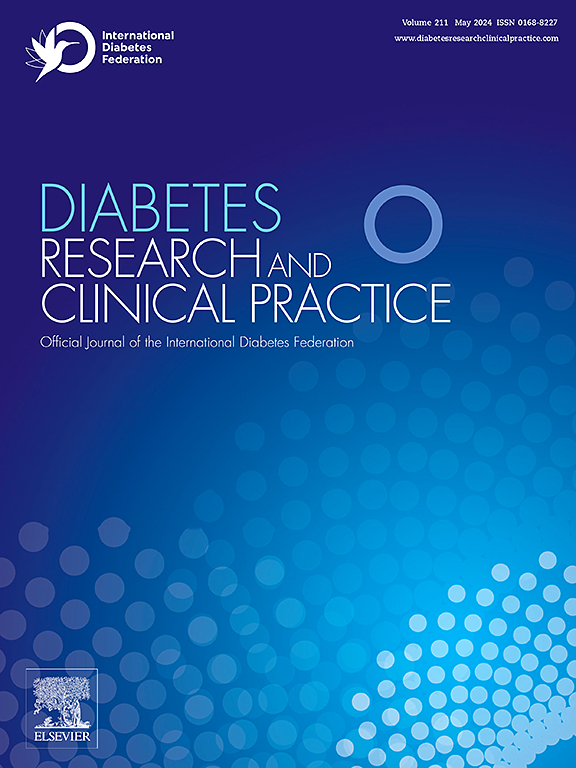The journey of MASLD: Tracking resolution, relapse, and predictive factors after sleeve gastrectomy and one-anastomosis gastric bypass, a propensity score-matched cohort study
IF 6.1
3区 医学
Q1 ENDOCRINOLOGY & METABOLISM
引用次数: 0
Abstract
Aims
To assess the rates and predictors of resolution and relapse of metabolic-dysfunction associated steatotic liver disease (MASLD) in individuals undergoing sleeve gastrectomy (SG) or one-anastomosis gastric bypass (OAGB).
Methods
This observational prospective cohort study involved 1618 propensity score-matched participants (81.5% female) with concurrent MASLD and obesity who underwent SG or OAGB between 2013 and 2023.
Results
In the context of a maximum follow-up of four years with a median follow-up of 2.2 years (IQR: 1.0–3.3), the overall rates of MASLD resolution and relapse were 71.1 per 1000 person-month and 8.7 per 1000 person-month, respectively. These rates were comparable between the SG and OAGB groups. Significant resolution predictors were a lower percentage of hepatic steatosis, a higher percentage of 12-month excess weight loss (EWL%), and younger age. In contrast, an increased percentage of liver steatosis, a higher pre-operative (Pre-Op) fat mass percentage (FM%), and older age were significant predictors of relapse.
Conclusion
This study found no significant differences in MASLD resolution and relapse rates between SG and OAGB. Key factors influencing MASLD outcomes included the percentage of hepatic steatosis, 12-month EWL%, Pre-Op FM%, and age.
一项倾向评分匹配的队列研究:套筒胃切除术和单口胃旁路术后MASLD的消退、复发和预测因素。
目的:评估接受袖式胃切除术(SG)或单吻合术胃旁路术(OAGB)的个体中代谢功能障碍相关脂肪变性肝病(MASLD)的缓解和复发率和预测因素。方法:这项观察性前瞻性队列研究纳入了1618名倾向评分匹配的参与者(81.5%为女性),这些参与者同时患有MASLD和肥胖,并在2013年至2023年期间接受了SG或OAGB。结果:在最长随访4年,中位随访时间为2.2 年(IQR: 1.0-3.3)的情况下,MASLD的总缓解率和复发率分别为71.1 / 1000人月和8.7 / 1000人月。这些比率在SG组和OAGB组之间具有可比性。显著的解决预测因子是肝脂肪变性百分比较低,12个月体重超重百分比较高(EWL%)和年龄较小。相比之下,肝脂肪变性百分比的增加、术前脂肪质量百分比(FM%)的增加和年龄的增大是复发的重要预测因素。结论:本研究发现SG和OAGB在MASLD消退和复发率方面无显著差异。影响MASLD预后的关键因素包括肝脂肪变性百分比、12个月EWL%、术前FM%和年龄。
本文章由计算机程序翻译,如有差异,请以英文原文为准。
求助全文
约1分钟内获得全文
求助全文
来源期刊

Diabetes research and clinical practice
医学-内分泌学与代谢
CiteScore
10.30
自引率
3.90%
发文量
862
审稿时长
32 days
期刊介绍:
Diabetes Research and Clinical Practice is an international journal for health-care providers and clinically oriented researchers that publishes high-quality original research articles and expert reviews in diabetes and related areas. The role of the journal is to provide a venue for dissemination of knowledge and discussion of topics related to diabetes clinical research and patient care. Topics of focus include translational science, genetics, immunology, nutrition, psychosocial research, epidemiology, prevention, socio-economic research, complications, new treatments, technologies and therapy.
 求助内容:
求助内容: 应助结果提醒方式:
应助结果提醒方式:


